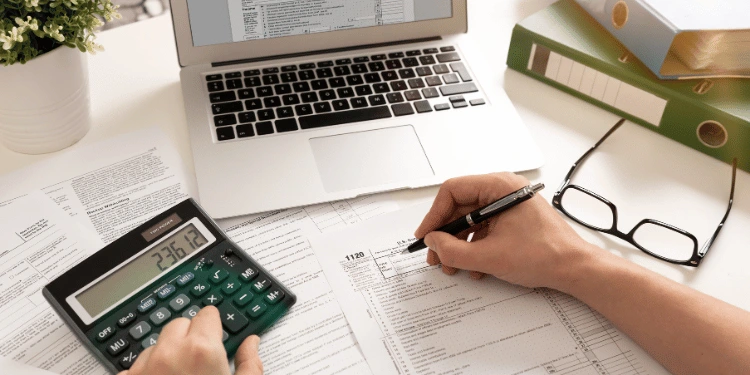Tax Refund Speed Secrets: How to Access Your Biggest Payday Quickly and Securely
Anúncios
Understanding Tax Refund Trends
Tax refund trends are looking promising for many taxpayers.
On average, refunds have seen a 38% increase compared to the previous year, reflecting greater relief for those eagerly awaiting their refunds.
Anúncios
This significant rise in refund amounts highlights the favorable changes in tax policies and adjustments that cater to the financial needs of Americans.
Annually, about 75% of Americans receive tax refunds.
Anúncios
These refunds provide a substantial financial boost, often dubbed the “biggest payday of the year.”
This majority reliance on refunds signals their crucial role in household budgeting and financial planning.
Furthermore, a noteworthy trend this year is the substantial rise in the average direct deposit refund, which has climbed 34.1% from last year to $2,069.
Many taxpayers are leveraging the efficiency and security of direct deposit, resulting in quicker access to their refunds.
As we transition to the next section, it’s clear that understanding and optimizing direct deposit can further enhance the speed and security of receiving tax refunds.
The Power of Direct Deposit
Direct deposit has revolutionized the way Americans receive their tax refunds, making the process faster and more secure.
Quicker Refunds
Ever wondered how long it takes for that hefty refund to hit your bank account?
Ninety percent of refunds processed via electronic filing coupled with direct deposit land in taxpayers’ accounts within 21 days.
This speed is one of the significant advantages that make direct deposit the preferred method for most taxpayers.
Widespread Use
Currently, eight out of 10 taxpayers opt for direct deposit, a sharp increase driven by the convenience and efficiency it provides.
Traditional paper checks are slowly but surely becoming a thing of the past as more people embrace the benefits of electronic transfers.
Enhanced Security
Besides speed, the security aspect of direct deposit cannot be overstated.
It eliminates the risks associated with mailing paper checks, such as loss, theft, or the hassle of uncashed checks.
The same electronic system used for Social Security and Veterans Affairs benefits ensures that your refund lands safely where intended.
Transitioning to discussing how to set up direct deposit successfully can be the next logical step for taxpayers eager to implement this secure and speedy method.
Setting Up Direct Deposit Successfully
Setting up direct deposit for your tax refund is a smart move that can save you time and eliminate the risks associated with paper checks.
Here’s how to do it smoothly.
How to Locate and Verify Bank Routing and Account Numbers
To set up direct deposit, you need your bank’s routing and account numbers. Here’s where to find them:
- 🗎 On your checks: The routing number is on the bottom left and the account number is on the bottom right.
- 🗎 Online banking: Sign in to your bank’s website and find these details in your account information.
- 🗎 Bank contact: Call or visit your bank branch for confirmation.
Make sure these numbers are correct to avoid delay.
Even one wrong digit can reroute your refund to the IRS for a paper check, which means waiting weeks longer.
Process for Requesting Direct Deposit
You can request direct deposit when filing your tax return. The process varies depending on how you’re filing:
- 🗎 Using tax software: Select direct deposit as your refund method and fill in your bank information.
- 🗎 With a tax preparer: Inform your preparer that you prefer direct deposit.
- 🗎 Paper filing: Even if you file by paper, you can still choose direct deposit by marking the option and providing your bank details.
Filing electronically while opting for direct deposit is the fastest way to receive your refund.
Importance of Double-Checking Numbers to Avoid Delays
Accuracy is crucial.
Before submitting, double-check your routing and account numbers.
This simple step ensures your refund lands in your account without any hitches.
If there’s a mistake, the IRS will resort to sending you a paper check, considerably slowing down the process.
Transitioning to handling alternative options for the unbanked is essential, so stay tuned for practical solutions to ensure you get your refund smoothly no matter your banking status.

Alternative Options for the Unbanked
While direct deposit is the preferred method for most taxpayers, not everyone has a bank account.
But don’t worry, there are still viable alternatives to ensure you receive your tax refund quickly and securely.
Using Reloadable Prepaid Debit Cards and Mobile Apps
If you don’t have a bank account, you can opt for reloadable prepaid debit cards or mobile payment apps.
Many of these options provide routing and account numbers similar to traditional bank accounts, which are necessary for direct deposit.
Make sure to confirm with the financial institution that your card or app can receive IRS deposits and double-check the routing and account numbers to prevent delays.
Opportunity to Open New Bank Accounts Before Filing
Another option is to open a new bank account if you expect to receive a refund.
Many banks offer quick account setup processes, and some even provide incentives for new customers.
Having a bank account not only simplifies receiving your tax refund but also offers long-term financial benefits.
Ensuring Alternative Payment Methods Have Proper Routing Information
For a smooth and speedy deposit process, it’s crucial to verify the routing information for any alternative payment method you choose.
Incorrect information can result in significant delays, potentially reverting the deposit to a paper check, which takes longer to process.
Understanding these alternative options will help you get your tax refund efficiently, even without a conventional bank account.
By ensuring your routing details are accurate and exploring the advantages of prepaid cards and mobile apps, you can look forward to a hassle-free refund experience.
Smart Refund Management Strategies
Managing your tax refund wisely can help you achieve financial stability.
This section will discuss how to best allocate your refund, including splitting deposits into multiple accounts, combining immediate use and savings, and understanding the rules for multiple deposits.
Splitting Refunds Across Multiple Accounts
Did you know you can split your tax refund? You can divide your refund into up to three different accounts.
This offers the flexibility to allocate funds for immediate needs and future savings.
Whether you file electronically or by paper, you can direct deposit funds into multiple U.S. financial institutions, reloadable prepaid debit cards, or mobile apps.
Combining Immediate Use and Savings Accounts
A strategic approach to managing your refund is by combining immediate use and savings accounts.
For example, you might deposit part of your refund into a checking account for everyday expenses and the rest into a savings or investment account for the future.
This ensures you have the funds you need now while also growing your savings for later.
Limitations and Rules for Multiple Account Deposits
There are some important rules to keep in mind when splitting your refund:
- 🗎 Your refund can only be deposited into U.S. or U.S.-affiliated accounts registered in your name, your spouse’s name, or both if it’s a joint account.
- 🗎 No more than three electronic refunds can be deposited into a single financial account or prepaid debit card. Exceeding this limit will result in an IRS notice and a paper refund.
The various options for managing your refund help ensure seamless financial planning and flexibility.
Keeping these strategies in mind can make a significant difference in how effectively you use your tax refund.
Moving forward, it’s crucial to ensure that you’re able to track your refund effortlessly to avoid any delays.
Tracking Your Refund
Using the IRS ‘Where’s My Refund?’ Tool Effectively
One of the easiest ways to track your tax refund is by using the IRS “Where’s My Refund?” tool.
This tool allows you to monitor the status of your refund 24 hours after e-filing or four weeks after mailing a paper return.
To use the tool, you’ll need:
| Requirement | Details |
|---|---|
| 🔢 Social Security or Taxpayer ID | Provide your Social Security Number (SSN) or Individual Taxpayer Identification Number (ITIN). |
| 📄 Filing Status | Indicate your filing status (e.g., Single, Married Filing Jointly, Head of Household). |
| 💰 Exact Refund Amount | Provide the exact refund amount shown on your tax return. |
Timeline Expectations for Electronic vs. Paper Filing
Refund timelines depend largely on whether you filed electronically or by paper.
If you filed electronically and chose direct deposit, most refunds are issued within 21 days.
Once the IRS approves your refund, it should appear in your account within five days.
Paper filers, however, might wait four weeks or longer for processing.
Special Considerations for EITC and Child Tax Credit Claims
For those claiming the Earned Income Tax Credit (EITC) or Additional Child Tax Credit (ACTC), refunds cannot be issued before mid-February.
This delay ensures compliance with the Protecting Americans from Tax Hikes (PATH) Act.
If you filed early and claimed these credits, you can expect most refunds to arrive by early March, with status updates typically available by February 22.
Using these tips ensures that you stay informed about your refund status, helping you plan your finances more effectively.







